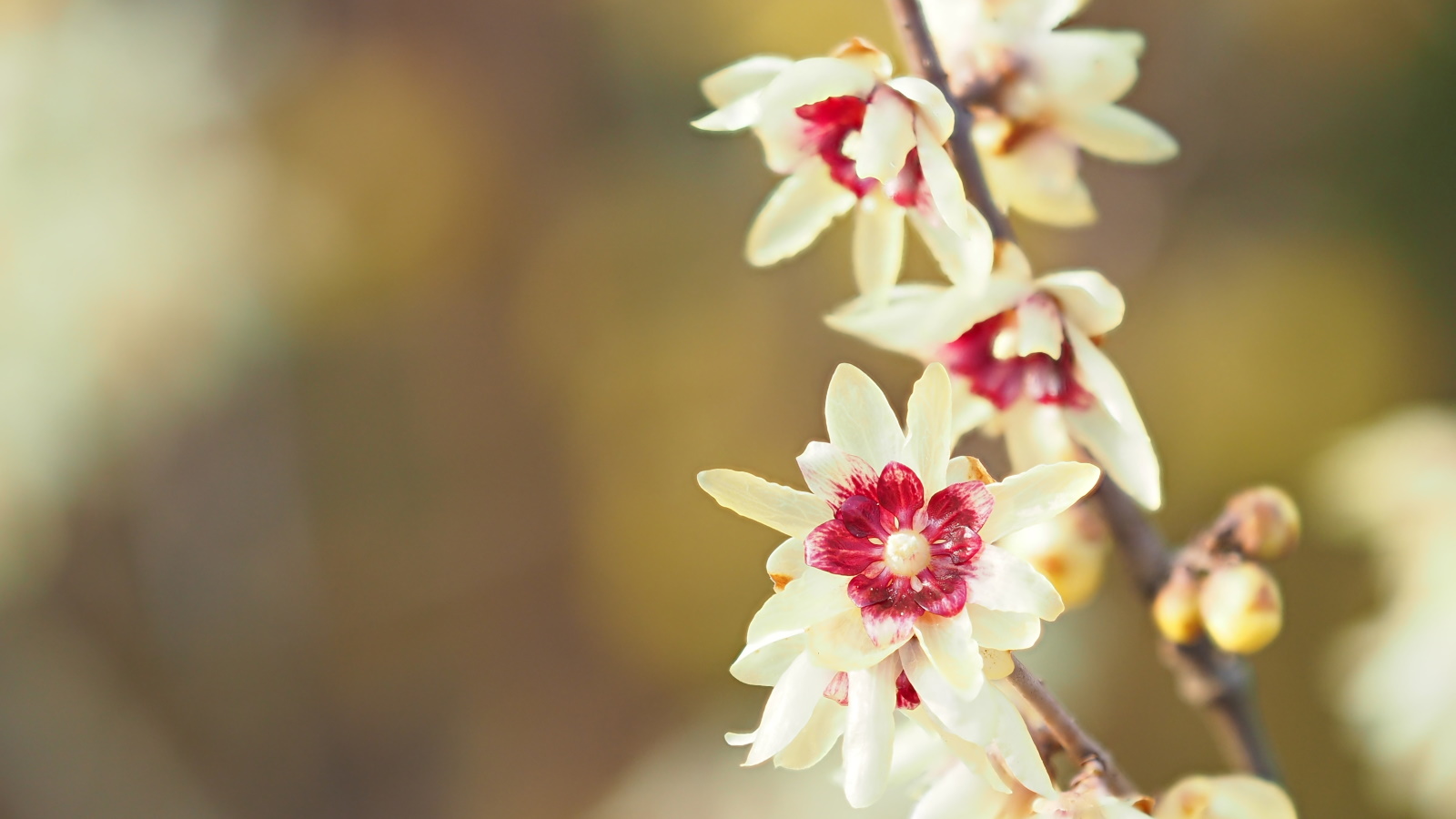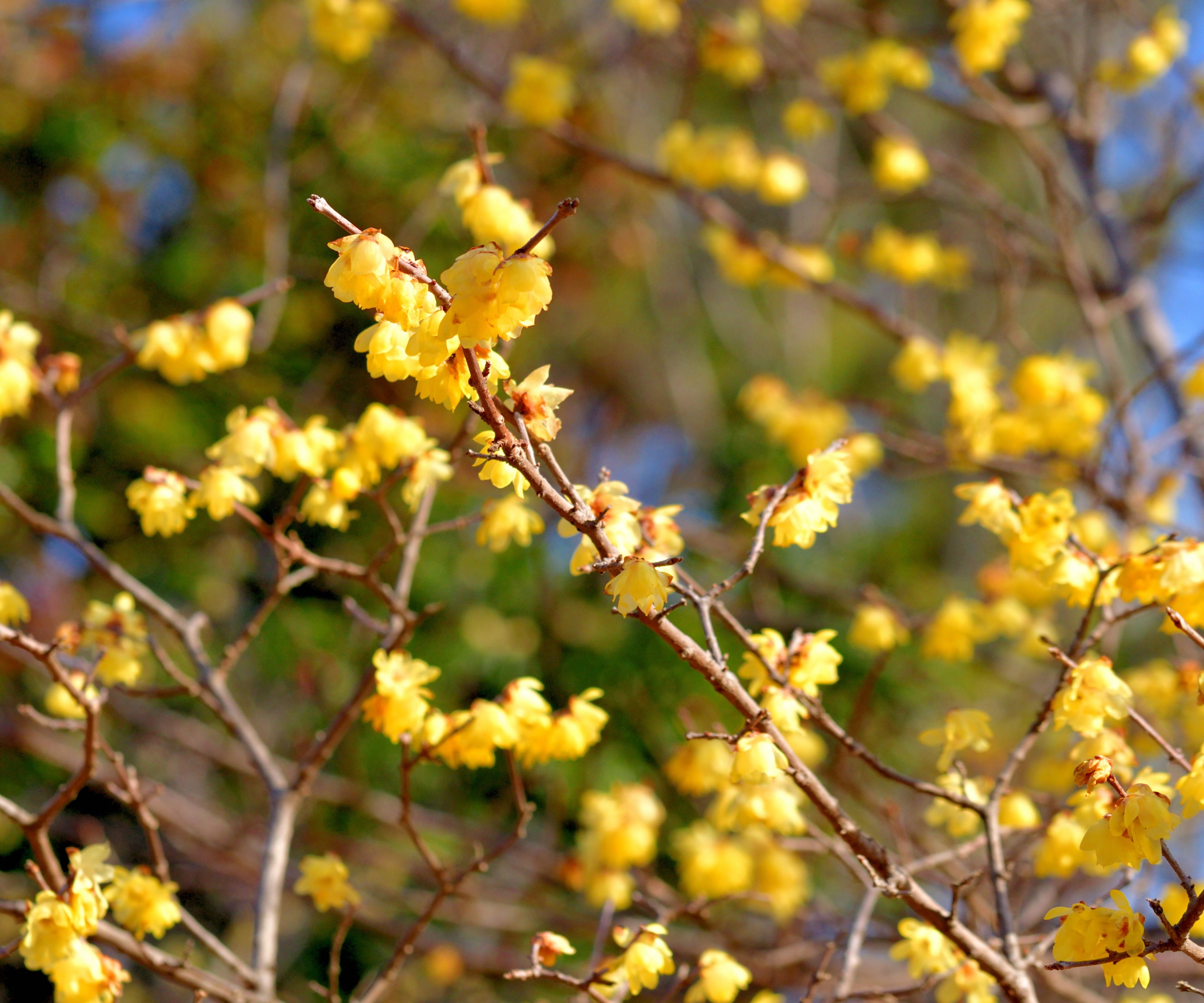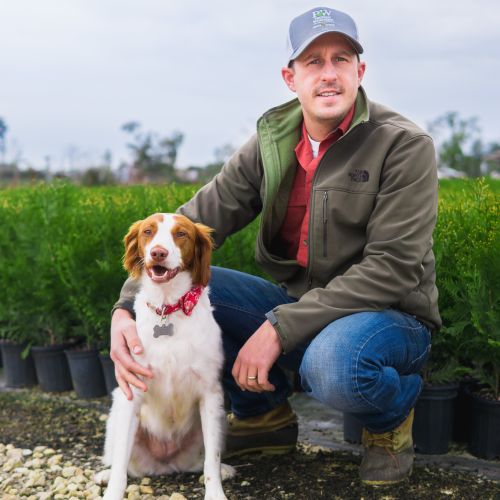How to grow wintersweet – top tips for sweet-smelling winter flowers
With pale yellow blooms and a heady fragrance, this hardy shrub will surely lift the spirits during the winter months


Wintersweet, or Chimonanthus praecox, is a hardy deciduous shrub that is popular for its delicate winter blooms and heady aroma. The name 'wintersweet' seems apt for this shrub, describing the colorful flowers and spiced fragrance that can be much needed in the winter garden. The flowers tend to bloom from December through to February, helping to add backyard interest during the winter months.
Native to Asia, the leaves of this winter flowering shrub turn from green to yellow before dropping in the fall. The distinctive flowers then appear on bare stems in shades of pale yellow to deep maroon, going on to produce a sweet and spicy fragrance.
As a slow-growing shrub, wintersweet is the perfect addition to any backyard, whether you have limited space or large borders. It can, if left alone, grow to the size of a small tree, but with a little care and maintenance, you can easily prune wintersweet to fit in with your space.
Follow our care and advice guide below and grow your own wintersweet shrub to brighten up your backyard this winter.

How to grow wintersweet
Follow our simple guide below to grow your own wintersweet shrub in your backyard, transforming your outdoor space with fragrant pale-yellow flowers through the winter months.
Things to consider before growing wintersweet

Wintersweet is a great low-maintenance option for your garden, and will certainly add interest and impact to your backyard.
This shrub will grow in US hardiness zones 7 - 9, doing best in 'full sun to partial shade,' says Alex Kantor, gardening expert and owner of Perfect Plants Nursery. For best results, select a sheltered, bright spot in the garden, perhaps trained against a warm, south-facing wall.
It grows at a 'moderate pace,' Alex continues, 'reaching a height of about 10-12 feet in 5-10 years.' Whilst you can shape and prune this shrub to fill a space within your garden, consider the best placement for wintersweet before planting, ideally in a location where the shrub can grow to a good size, and where the blooms will be visible from your home.
If you are interested in growing flowers for your home, wintersweet is a great option for ensuring that you have plant material for your floral arrangements during the winter months. Florists use wintersweet for the delicate yellow flowers at a time when little else is growing, making this a perfect winter option for cutting and adding to vases.
Finally, it is worth remembering that during the summer months, this shrub will not flower. Whilst the green foliage is an attractive backdrop in the garden, you might not want this shrub dominating in a central position.

Alex has worked in the horticultural industry for over 20 years and grew up on the farm since his childhood years. Alex is an expert on landscape trees, shrubs, and indoor plants. He is passionate about growing and helping others learn the trade. You'll see him driving around the farm with his sidekick, Cricket, in tow.
Top Tips For Planting And Maintaining Wintersweet

- Soil: When planting a new wintersweet shrub, be sure to dig a hole that is a few inches larger than the pot size. 'Wintersweet is generally low maintenance,' Alex says, 'but prefers a well-drained soil.' Applying a layer of mulch around the base of the plant can 'help to insulate the roots and protect the shrub from temperature fluctuations' during the winter.
- Light: For the best results, plant your wintersweet in a location that is full sun and sheltered. Direct light will encourage the plant to produce more flowers the following year.
- Watering: 'Regular watering is necessary during dry spells,' Alex continues, especially 'when first planted.' Be sure to check on your plant in the spring and summer, when temperatures increase, and if the soil is dry to the touch, give your wintersweet a good drink of water.
- Fertilizing: Wintersweet does not need fertilizing once established. However, if you are looking for plenty of pale yellow blooms, a slow-release fertilizer applied in spring can help, such as this smart-release plant feed from Walmart.
- Pruning: 'To maintain wintersweet,' Alex says, 'prune it after flowering to encourage new growth and maintain its appearance.' This is usually in February, but will depend on your location and the longevity of your wintersweet flowers. Old, woody stems can be cut down to the base of the shrub to maintain a healthy, compact shape.
- Additional Tips: If you have the time, and the patience, why not try growing wintersweet seed, available from Walmart. Growing from seed is a rewarding experience, but your seeds can take 10 years or more until they flower.
FAQs
When should you prune wintersweet?
After flowering, usually in February, is the best time to prune your wintersweet shrub. Old, woody stems can be cut down to the base of the shrub to maintain a healthy, compact shape. In following this approach, you can be sure of new, healthy growth in the subsequent growing year, which will also help boost the number of flowers.
Can you grow wintersweet from seed?
Yes, if you have the time and the patience, you can grow wintersweet from seed. Watching a shrub grow over time can be a rewarding experience, but your wintersweet seeds can take over 10 years to flower. Place seed in a cool greenhouse or cold frame to encourage growth, and monitor the soil every day during warmer periods to check on watering. One other option is to propagate your shrub, by taking plant cuttings.
Can you grow wintersweet in a container?
Yes, you can grow wintersweet in a container. Use a large container filled with a well-draining potting mix, positioned in a sheltered and sunny location. Keep an eye on watering your container, particularly during the spring and summer months when there is a risk of drought. Remember, wintersweet are slow-growing shrubs, so replanting your shrub in a larger container will only be necessary after several years.
Planting wintersweet can add color and scent to your garden at a time of year when much of the garden is dormant. Why not consider other winter flowering shrubs, such as winter jasmine, to add even more color to your garden during the darker months of the year?
Sign up to the Homes & Gardens newsletter
Design expertise in your inbox – from inspiring decorating ideas and beautiful celebrity homes to practical gardening advice and shopping round-ups.

Thomas is a Content Editor within the Gardens Team at Homes and Gardens. He has worked as a professional gardener for both public spaces and private estates, specializing in productive gardening, growing food and flowers. Trained in Horticulture at the Garden Museum, he has written on gardening and garden history for various publications, including The English Garden, Gardens Illustrated, Hortus, The London Gardener and Bloom. He has co-authored a Lonely Planet travel book, The Tree Atlas, due out in 2024.
-
 The biggest curtain trends to follow in 2025 – 8 key looks to shop that will instantly elevate your rooms
The biggest curtain trends to follow in 2025 – 8 key looks to shop that will instantly elevate your roomsThese are the colors, styles, and materials to embrace in your windows this year if you want desirable drapes, plus our favorite places to shop the trends
By Lilith Hudson
-
 Reese Witherspoon upgraded a small corner into a cozy reading nook – designers say you can replicate her 'ultimate little escape' (from $18)
Reese Witherspoon upgraded a small corner into a cozy reading nook – designers say you can replicate her 'ultimate little escape' (from $18)'It’s all about comfort, calm, and just the right amount of cozy': You only need three things to follow Reese's example – and it's not only for book lovers
By Megan Slack